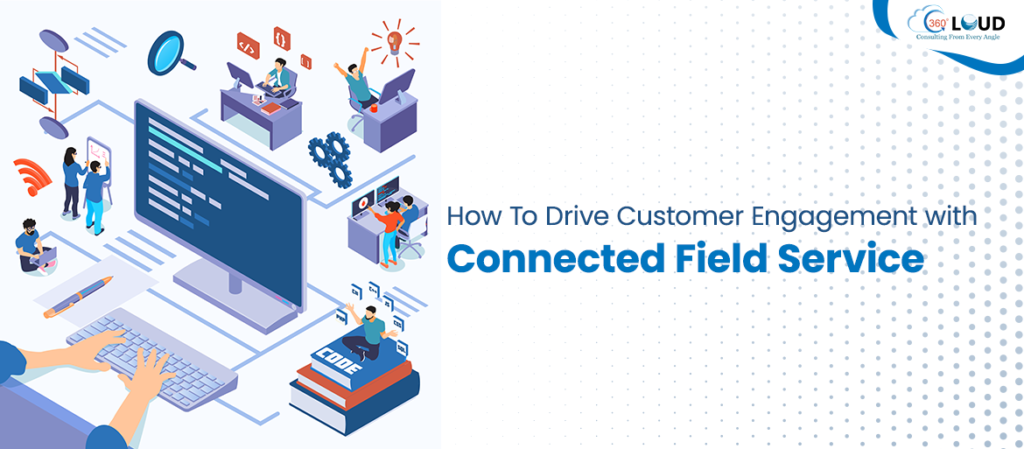Every customer has gone through the pain of scheduling a field service appointment and getting the responses like- “Please wait, you’re put on hold” or “You have been slotted into the next week’s schedule.” If you are giving such responses to your customers then it is all because of your inefficiencies in field service management.
Do you know that 84% of customers say the experience delivered by a company is as important as the products or services it delivers? Well, that means that every time you keep a customer waiting, you might end up risking the reputation of the company. Your customers deserve to get same-day assistance and asset installation. Salesforce Field Lightning Service can help you make a difference here.
What is Field Service?
A mobile workforce without a field service management system is like trying herding cats. Field service management is usually required in sectors where it is needed to employ mobile workers and contractors. It could be in public utilities, telecommunications, professional services, manufacturing, transportation, and so much more.
Field service management is all about coordinating field operations like scheduling service appointments, tracking product stock, appointment status, etc. With customers and contractors adding to the business, it’s nearly impossible to manage it all without an automated system. Thank goodness for Field Service!
Field Service to Boost Customer Engagement
Customers always expect some control, convenience, and flexibility whenever they connect to a business. A company thus has to strategize its field service to offer customers the most convenient experience. Salesforce Field Service Lightning has simplified field service to a great extent and has provided companies the roadmap to scale up customer engagement. Here we’ve listed some ways connected FSL in Salesforce can help you build a proactive customer engagement model.
-
Let customers take the wheel of self-service
Work on providing your customers with self-service capabilities to create and change requests across different communication channels. This can be done in multiple ways:
i. Create a customer portal. With an easily accessible customer portal on the business website, customers can book or update an appointment. They can even access FAQs this way to know the answers to their common questions, which might prevent the need to put a query.ii. Leverage chatbots. Customers always look forward to getting an instant response to their inquiries, and you can provide them so through chatbots. Chatbots enabled on your website can field common requests like making an appointment or checking a service request and creating a seamless customer experience.
iii. Provide visibility into service history. Make your customer portal a one-stop shop for customers, allowing them to book appointments and track the service history platform on the same platform. This will eliminate redundancies in problem-solving and the need for customers to call up for details.
-
Automate updates for service status
It could be frustrating for the customers to keep calling to ask where a mobile worker is or why they haven’t reached the service delivery yet. Sending automated updates to customers via SMS, email, or the customer portal can reduce this friction. This helps in reducing call volumes for dispatchers while improving customer satisfaction.
-
Streamline the post-visit process
Organizations can automate their entire post-visit process with a list of services recorded in the customer portal. Offering them a digital payment option is a great way to continue the services, so there is no need to visit to pay the check or cash. Also, for any of their questions, allow the customers to connect directly with agents through chat. You can close the feedback loop by reaching out to their preferred communication channel. Deploying an automated survey or questionnaire on everything from issue resolution to their experience with a mobile worker can also be helpful. This helps in evolving staffing and training to meet customer needs and address the issues head-on to maintain customer loyalty.
-
Keep customers engaged on an ongoing basis
Chances are customers are not recalling a service after purchase until they need it again for fixing any damage to it. They won’t be remembering your company unless scheduled maintenance is a part of your service contract. The company agents have to stay proactive and use real-time data to understand asset conditions and detect when it’s due for preventative maintenance or upgrades. It is helpful to the customers and also continues engagement beyond the times when there’s a problem.
Keep Customer Engagement On Top Of Your Priority List with FSL
When it is about pleasing the customers, you should always be ready to go the extra mile. Customers will make or break your brand, so it’s always worth finding ways to improve customer engagement. Salesforce Field Service Lightning will help you improve your field service in all those ways that could keep your customers closer to you and more satisfied.
